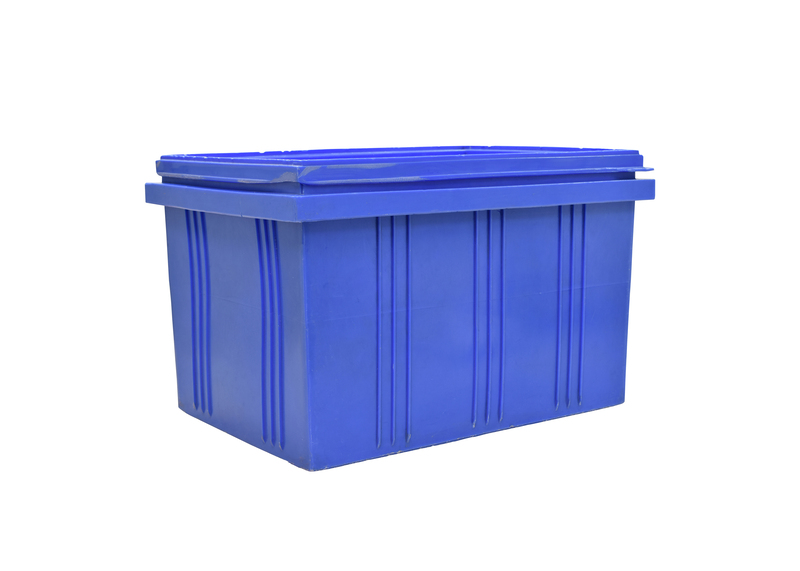Top Storage Methods to Keep Your Unused Freezer in Shape
Posted on 12/06/2025
Top Storage Methods to Keep Your Unused Freezer in Shape
When you've decided to unplug that old freezer in your basement or garage, it's easy to forget about it. But proper storage methods for unused freezers are crucial if you want your investment to last, prevent odors, and keep pests and mold at bay. Whether you're planning to keep your freezer in long-term storage or are just preparing for a short break, maintaining your unused freezer in top condition is essential.
In this comprehensive guide, we'll explore the best storage techniques and care tips for an unused freezer to preserve its integrity, efficiency, and value. Read on to learn how you can keep your unused freezer in shape, prevent issues, and make it ready to use whenever you need it again!
Table of Contents
- Why Proper Storage Methods Matter for Freezers
- Step-by-Step Preparation Before Storing Your Freezer
- Top Storage Methods for an Unused Freezer
- Keeping Your Unused Freezer Clean and Fresh
- Long-Term vs Short-Term Storage Tips
- Common Mistakes to Avoid When Storing Your Freezer
- Frequently Asked Questions
- Conclusion: Preserve Your Unused Freezer With Smart Storage Practices
Why Proper Storage Methods Matter for Freezers
Before diving into the best storage solutions for unused freezers, let's understand why it's important. If a freezer is not maintained well during periods of non-use, it can develop:
- Bad odors due to trapped moisture and food remnants
- Mold and mildew inside the cavity or on gaskets
- Pest infestations from improperly sealed doors
- Rust and corrosion on metal parts and surfaces
- Mechanical problems when restarting the appliance after a long gap
Applying effective freezer storage techniques keeps your appliance safe, clean, functional, and ready to use whenever you need extra freezing capacity again.
Step-by-Step Preparation Before Storing Your Freezer
Preparation is absolutely critical for keeping an unused freezer in good shape. Here's a step-by-step process:
1. Remove All Items
- Take out all food and contents from the freezer.
- Check drawers, shelves, and corners for forgotten items.
2. Unplug and Defrost
- Turn off and unplug the freezer at least 24 hours before cleaning.
- Allow the ice to melt naturally. Place towels to absorb water run-off.
- Never use sharp tools to speed up the process--it could damage the lining!
3. Deep Clean the Interior and Exterior
- Wash the inside with a mixture of baking soda and water (1 tablespoon baking soda per quart of warm water).
- Remove and clean all shelves, drawers, and bins separately.
- Wipe the exterior and clean the door gasket with mild detergent.
- Finish by drying all surfaces thoroughly to prevent mold growth.
4. Inspect and Repair Damages
- Look for cracks, broken seals, or damaged hinges.
- Address any problems now--deferred maintenance will worsen over time.
5. Leave the Door Ajar
- Place a rolled towel or an appliance spacer to keep the freezer door slightly open, preventing musty odors and mold.
Pro Tip
- Sprinkle a handful of baking soda inside or place an open box on a shelf to absorb odors during storage.
Top Storage Methods for an Unused Freezer
Now that your appliance is clean and prepped, let's look at the proven storage methods for keeping an unused freezer in top condition.
1. Correct Placement for Storage
-
Store in a dry, well-ventilated area.
Garages, basements, or utility rooms are ideal if they're protected from extreme temperature and humidity fluctuations. -
Avoid direct sunlight and dampness.
Exposure to the elements can cause rust and degrade seals. Choose a shaded spot off concrete flooring when possible.
2. Keep the Freezer Upright
-
Always store your freezer in an upright position.
Laying it on its side (especially for long periods) can cause oil from the compressor to enter the cooling lines, which harms the appliance.
3. Use Appliance Covers or Blankets
-
Protect your appliance from dust and dirt by covering it with a breathable appliance cover or blanket.
Avoid plastic sheets that trap moisture inside and encourage mold.
4. Maintain Proper Airflow
- Ensure at least 2-3 inches of space on all sides of the freezer to promote ventilation and prevent mildew buildup.
5. Store on a Raised Platform
-
Place your unused freezer on wooden planks, a pallet, or a thick mat.
This method insulates the appliance from floor moisture and minimizes rust on the bottom panel.
6. Use Moisture Absorbers for Added Protection
-
Place silica gel packets or moisture-absorbing products inside to keep humidity in check.
This reduces the risk of mold growth, especially in humid climates.
7. Secure the Door
- Keep the freezer door slightly ajar (use a special door wedge or spacer) to let air flow freely and stop odor buildup.
8. Check the Freezer Periodically
-
Every 1-2 months, inspect your unused freezer for any signs of moisture, mold, or pests.
Wipe down any condensation if necessary, and refresh moisture absorbers and baking soda packs.
Keeping Your Unused Freezer Clean and Fresh
Hygiene is key to preserving an unused freezer. Here are techniques to keep your freezer clean while it's not in use:
- Leave a Deodorizer Inside: Use activated charcoal, coffee grounds, or baking soda in an open container to neutralize odors.
- Disinfect Regularly: If stored in a humid or pest-prone area, wipe down the inside with a vinegar-water solution every few months.
- Replace Moisture Absorbers: For long-term storage, change desiccant packs or baking soda regularly to maintain freshness.
- Monitor Door Seals: Check for debris or signs of deterioration--the door seals are essential for keeping humidity and pests out.
Long-Term vs Short-Term Storage Tips for Freezers
Short-Term Storage (Less Than 3 Months):
-
Performing a basic clean and unplugging the freezer may be sufficient.
Use a deodorizer and prop the door open slightly. - Keep in a temperature-stable environment (not an unheated garage in winter or a sweltering shed in summer).
Long-Term Storage (3 Months or More):
- Take extra steps such as removing the door entirely (for chest freezers) if regulations or pest issues dictate, or use a robust wedge to keep it wide open.
- Apply a thin layer of petroleum jelly to door gaskets to prevent cracking and sticking.
- Place additional pest deterrents like mothballs (outside of the appliance, never inside the freezer) or ultrasonic pest repellers nearby.
- Check for insulation or foam panel degradation during your periodic inspections.
Common Mistakes to Avoid When Storing Freezers
Even well-meaning homeowners can unintentionally damage their unused freezers with these common errors:
- Storing with the Door Closed: This traps moisture inside and makes the interior a breeding ground for mold, mildew, and odors.
- Laying the Freezer on Its Side or Back: Compressor oil can move into refrigerant lines, which may cause mechanical failure when restarted.
- Using Plastic Wraps or Tarps: These don't breathe and will trap humidity, leading to corrosion.
- Ignoring Periodic Checks: Long periods without inspection let small issues (like water leaks or pest entry) turn into major problems.
- Forgetting to Clean Thoroughly: Any residual food or grime can lead to persistent, hard-to-remove smells.
Frequently Asked Questions About Freezer Storage Methods
Can I store my unused freezer outside?
It's generally not recommended to keep freezers outdoors unless they are specifically rated for outdoor use. Exposure to temperature fluctuations, rain, and pests greatly increases the risk of damage.
How can I keep rodents out of a stored freezer?
Keep the area clean, remove any food residue, and use pest repellents. Ensure the door is not completely closed to discourage nesting.
Do I need to plug the freezer back in occasionally?
No, as long as the appliance is clean, dry, and stored in a suitable place, there's no need to run it. However, an annual startup checkup can help keep seals and internal parts in good shape.
Should I remove the freezer's door during long-term storage?
If children or pets frequent the storage area, removing the door (or securely propping it open) is a good safety measure. For chest freezers, consider local safety regulations.
Conclusion: Preserve Your Unused Freezer With Smart Storage Practices
Following the top storage methods for unused freezers not only protects your appliance from damage and unpleasant smells, but also extends its useful life and keeps it ready for future needs. With a little care--thorough cleaning, moisture management, good ventilation, and periodic checks--your dormant freezer will stay in excellent shape for years.
Make good use of these practical freezer storage tips and share them with family and friends, so every unused freezer remains a valuable backup in your home. When it's time to put it back into service, you'll enjoy a hassle-free, odor-free, and fully functioning appliance.
Remember: Taking care of your unused freezer doesn't take much time, but it makes all the difference!





